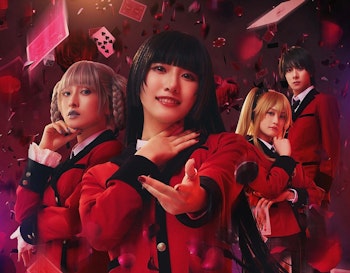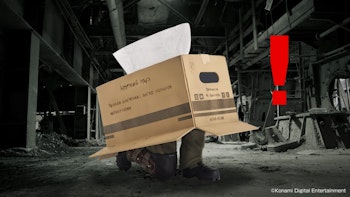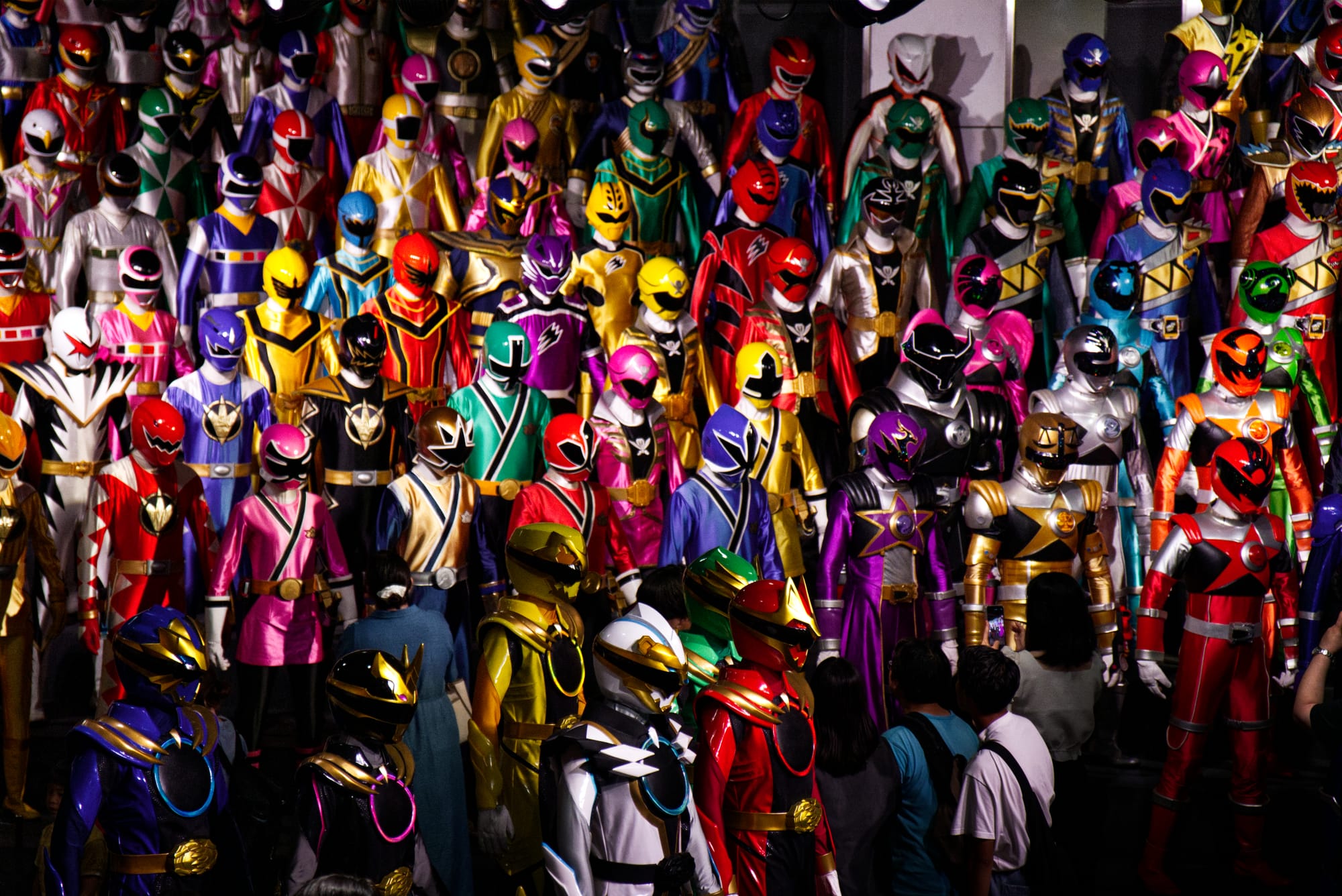
The more time I spent at the Every Super Sentai exhibition, a show celebrating 50 years of the beloved tokusatsu hero franchise that internationally would spawn the beloved Power Rangers, a shared love for not just the series but the craft it took to bring these stories was evident wherever I looked. That came in the exhibit itself, the joy of watching transformations of the heroes on screens in the opening room or seeing the props from even the earliest series of the show, such as MomoRanger’s biker-style out-of-suit costume from the very original series in 1975-1977, to simply reminiscing in the toys from across the series history. Elsewhere I saw it manifest in people’s wallets, as the gift shop held a huge array of 280 acrylic stands for sale representing every hero from every series, and there were picking up a hero from all eras and stories both old and new.
Super Sentai is 50 years old! In some ways the series feels like an enduring and immortal ever-present in Japanese pop culture, in others it’s hard to believe it’s gone on for so long. Marking the prestigious occasion, the latest yearly installment in the franchise, No. 1 Sentai Gozyuger, is both a traditional superhero story familiar to kids and adults who religiously tune into the show every week and a historic celebration that references every series from the Showa Era to the present day. Then you have this exhibition, which aims to bring rarely-seen props and costumes and mark the momentous occasion in style - the biggest selling point of the show to fans is its grand finale, a large room housing a hero suit for every hero in every series, lined up like a class photo for all to see.

The show had humble origins, designed with the hope of hopping on trends in the booming TV industry more than anything else. “I’m making a show to sell toys,” admitted Naoya Makoto of his primary thought playing the Red Ranger in the first series, Himitsu Sentai Gorenger, unaware of the franchise it would spawn. While most shows have stuck to a yearly release cycle ever since, this first show went on for two years after he didn’t believe it would last for even a quarter of that time on screens before being canceled. The formula was simplistic,too: good guys in a team fight against bad guys, throw in some cool fighting sequences, maybe a few explosions, and you had yourself a show.
This isn’t to say the series didn’t have pedigree behind it. Shotaro Ishinomori crafted that first series having kickstarted the Kamen Rider franchise a few years prior and making a name for himself with Cyborg 009. The series had some veterans of the industry who’d refined the blend of high-octane special effects on a tighter TV budget that had moved the flashy tokusatsu genre from its 1950s and 1960s boom on cinema screens with kaiju films to the smaller screen with Ultra Q and Ultraman, tokusatsu heroes and the effective reuse of costumes, materials and miniatures.
With the genre in decline on the big screen and more TVs in the home, the show was in the right place at the right time while having the entertainment factor to hook a generation of young kids. The 1960s saw the mass adoption of TVs into the home fueled heavily by the 1964 Tokyo Olympics, a market that begun to crave new forms of entertainment for the home. This was the era that brought us Astro Boy and the mecha and tokusatsu series that would remain with us today, series with high budgets for the time but profitable thanks to advertising and the subsequent sales of toys kids flocked to purchase. Many were inspired to recreate the shows seen by far wider audiences than the cinematic heights of the genre thanks to these series being beamed into living rooms for free every week.
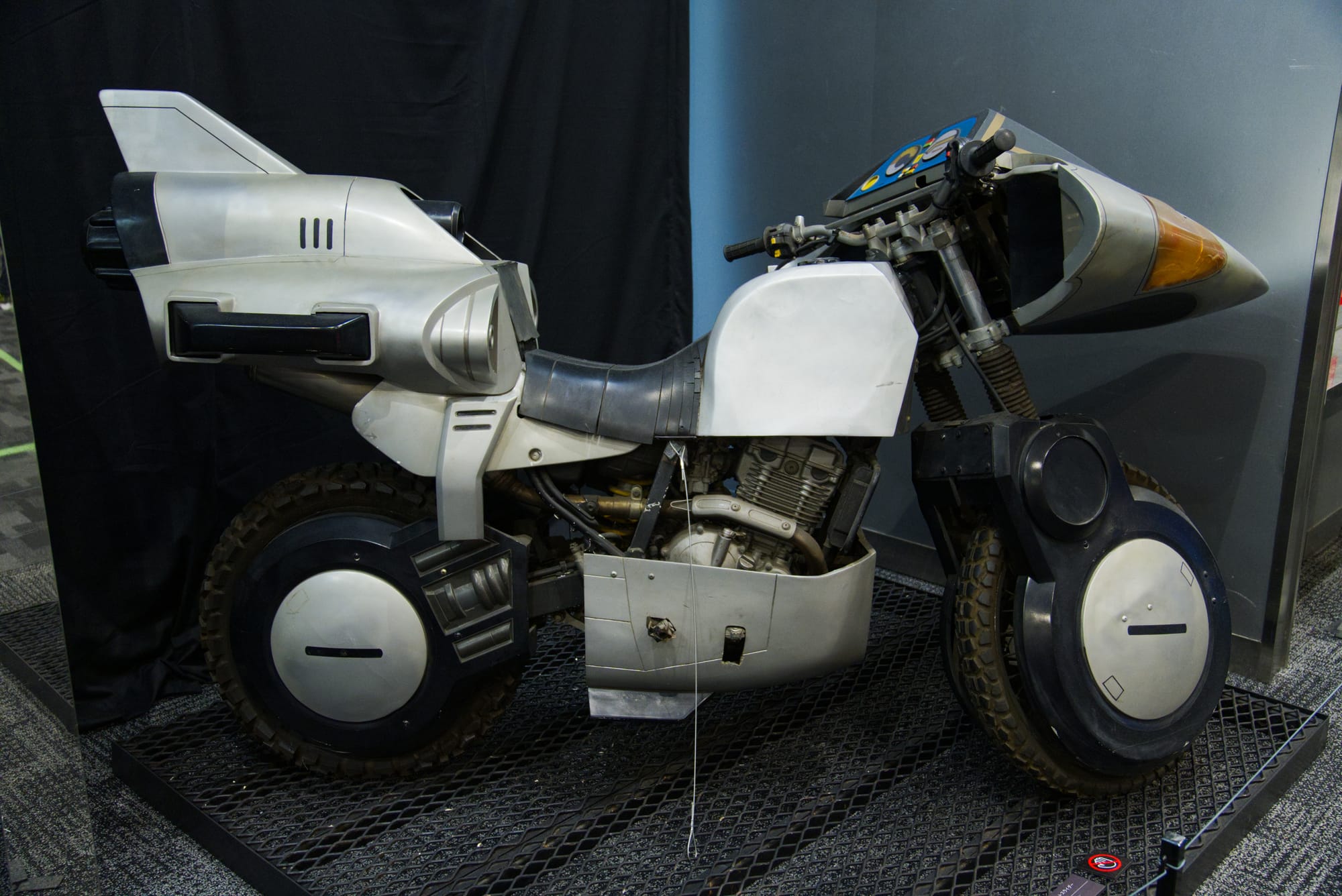
The signature attributes that would define the franchise in later years would establish themselves in Gorenger. The typically-five member teams, with at least one female characters with some series featuring a greater proportion than others alongside the transformation into their masked hero forms and the concept of a typically-alien threat were introduced here, and though the mecha suits that would define later series didn’t make an appearance in Gorenger large vehicles were present.
The series would continue to evolve and retain a yearly cycle following this story, despite the lackluster reception of its second series leading to an early cancelation and brief hiatus for the franchise. By the 1990s, the series was even catching eyes beyond Japan, and it was Kyoryu Sentai Zyuranger that would make the biggest impact as it was localized internationally by Saban Entertainment as the first ever Power Rangers series.
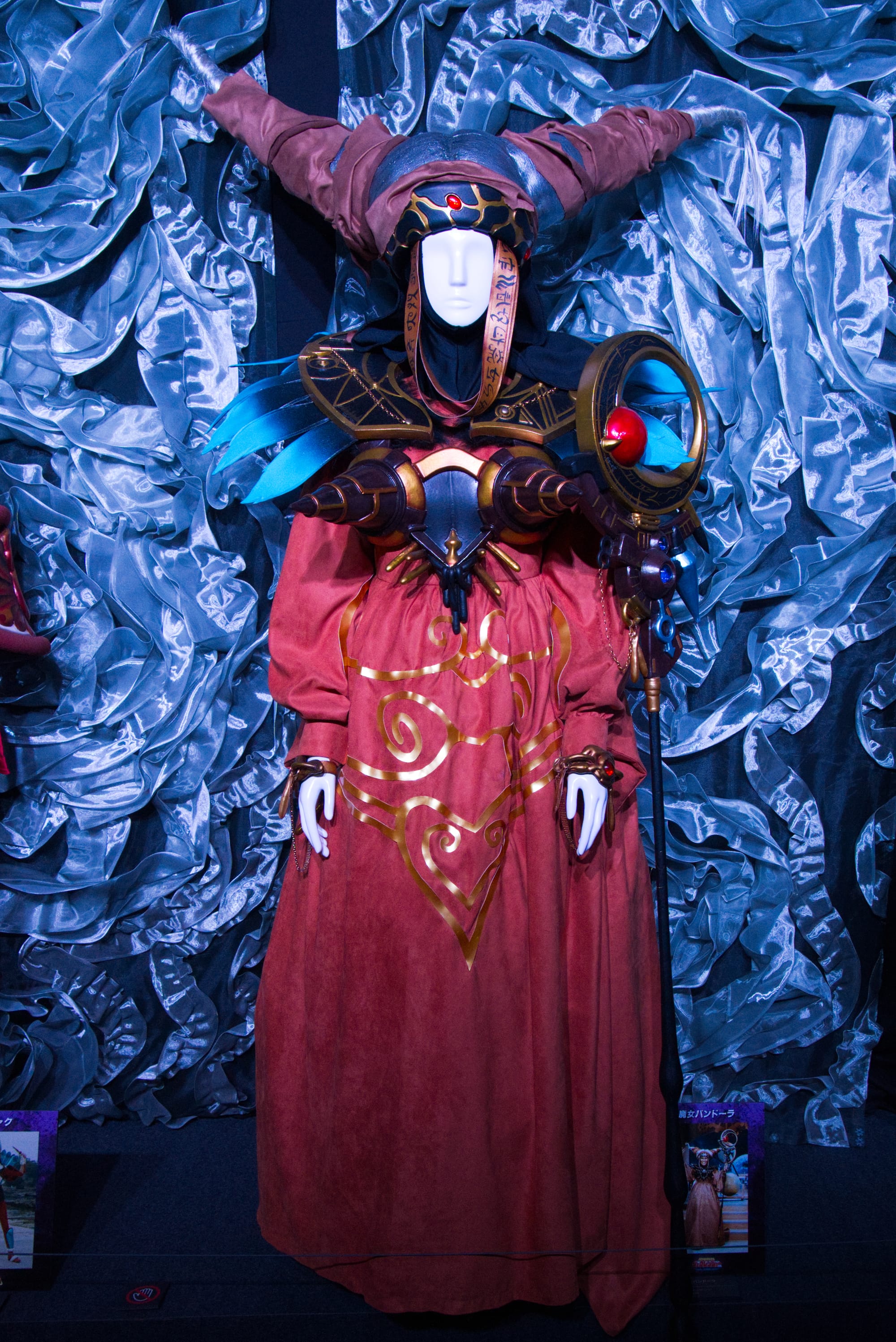
Today, the series is the background hum of daily life. If you’re a kid, especially a young boy growing up in Japan, it’s likely you have a Super Sentai series you grew up with that you would reminisce on, whether from time sat in front of the TV or making it to theaters to catch the yearly cinematic adventure of those heroes on the big screen. This was the concept driving the Every Super Sentai exhibition, a note particularly apparent in its prop showcase celebrating the history of the franchise. While props from the earliest series were minimal due to factors such as age and the lack of heightened preservation efforts at this time, once we reached the 1990s onwards it was very apparent that concerted efforts had been made to make sure every weapon and prop possible was kept in the best possible condition.
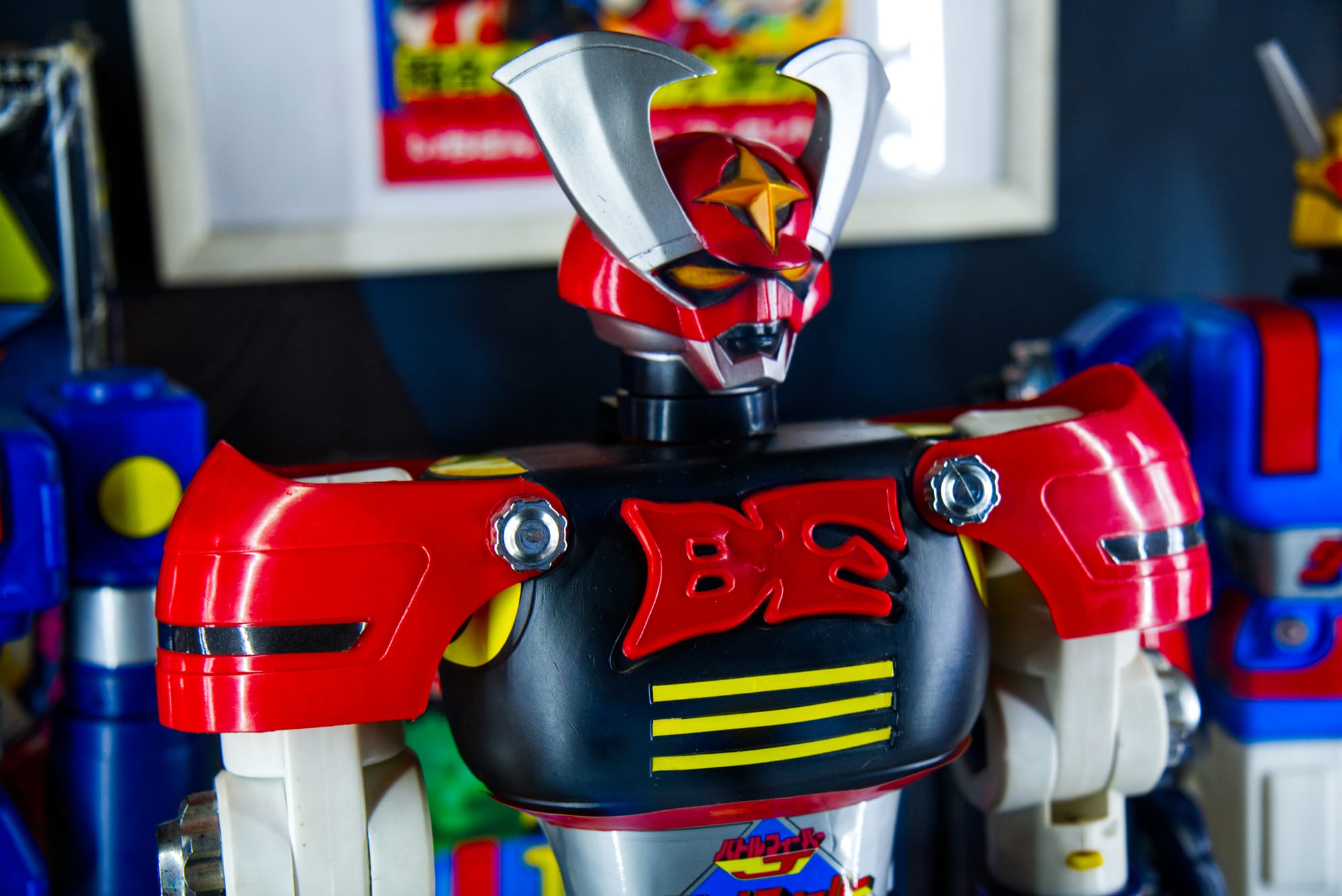
The Prism Boots from Choushinsei Flashman (1986) were on display, for example, but far from their prime. Made from plastic, the boots had cracked with age, and while the boot itself was present, parts were cracked and in pieces inside the display case. Seeing these props at all as a part of history is worthy enough of their presence, but you could tell the low costs of production and age had weathered a lot of the earliest pieces in the collection. By comparison, seeing show-worn pieces from series like Tokusou Sentai Dekaranger were immaculate, while even the largest props from later series such as Juken Sentai Gekiranger’s Geki Bazooka took pride and place in the space.
Proof of the endurance of the series was how, in the timeline retrospective marking each series’ release, space was left to include key phrases that entered the Japanese lexicon during their production or to mark historical events. The Kogyaru fashion subculture made its entrance into the Japanese consciousness during Zyuranger’s production, while events like the launch of Tamagochi or more serious world affairs made their presence known. With such a context you can see how world events influenced which series and gimmicks were being produced. The Murphy K9 in Dekaranger is clearly influenced by the love shared by many for the AIBO robot dogs produced by Sony a few years prior.
While this area didn’t allow photographs, subsequent areas featuring the motorbikes from early series, or the robot and transformation miniatures, were open to the public to commemorate. No entry or toy was free from love, here, whether we were talking about the few series to feature motorbikes like Zyuranger’s RK-1 dinosaur-themed bike, the hoard of toys for transformations across almost every series in a scene of pure chaos and childhood wonder, or the long lines for photospots sitting in the cockpit of the mecha for the pirate-themed Kaizoku Sentai Gokaiger (2011).
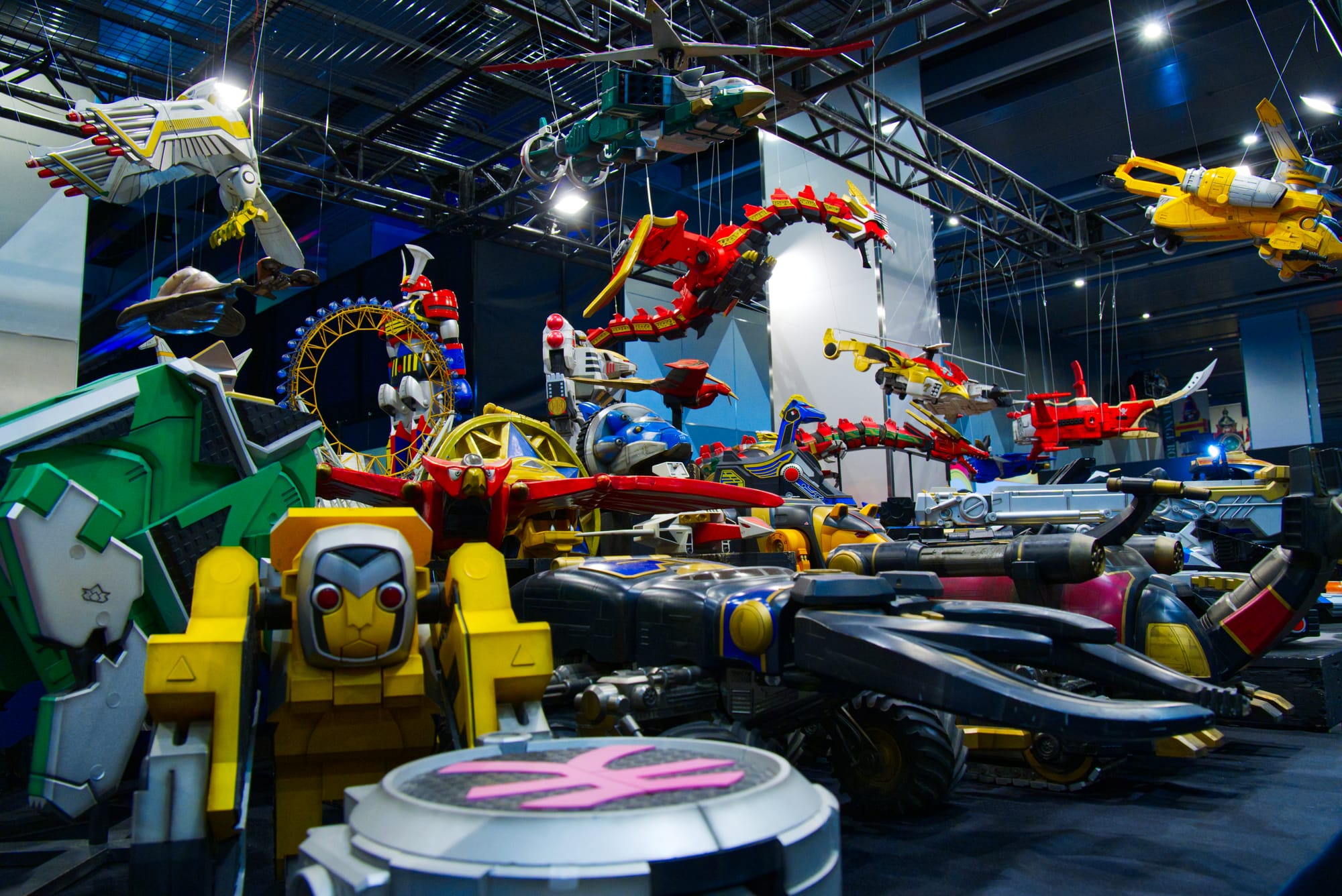
And that’s before reaching the final room, a true celebration of the series. With 280 costumes in one place, regular musical interludes of every theme song giving a spotlight and focus to every character, even someone with no passing interest would be unable to avoid gawking at just how many iconic hero costumes were stood in one place. Special viewing platforms were build for an areal view of the scene, and seeing older people with zoom lenses stood alongside 6-year-old kids who looked like they entered an unlimited candy store before dancing to whatever song came over the intercom next. One person I noticed getting emotional. And if you went around the corner, the unofficial heroes of the Akibarangers (a spin-off series for an older audience inspired by the Super Sentai fanbase) even had a place here, with deliberately-bootleg signage.
Everyone was here, and it’s a wonderful way to put into context 50 years of one of the most influential family shows in Japanese history. While far from the first hero-driven kids show, the team-up formula and links to toys would spawn imitators and even lead to more female-oriented series created in this vein such as Pretty Cure. Most of all, though, the magic of catching these shows in your formative years and playing with these toys stays with you, no matter your age. That’s why groups of 20-somethings reminiscing about their favorite shows not only enjoyed seeing their heroes represented, but were just as happy to see younger kids having that same fun. That’s what Sentai’s about, for the past 50 years and the next.
